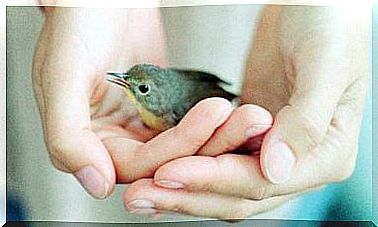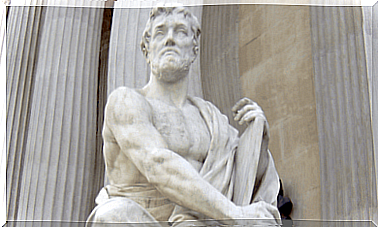The Simple Exercise Proposed By Albert Ellis To Break Away From Shame

Shame is an emotion that activates whenever we think we have missed a social norm. It fulfills a function of social regulation: thanks to it, we have ensured for millions of years the acceptance of the group and, consequently, the survival.
There are times when we have to face a situation that for us involves a risk because we know that we are very likely to be ashamed. Will we be rejected by the social group? Probably not, but we mistakenly think that we do, and what is more, we call this improbable fact terrible.
There are two ways to free ourselves from dysfunctional shame: one is to convince ourselves, through internal dialogue, that we have no evidence that could justify the fact that we anticipates the disapproval of those around us; if this is so, we do not need everyone’s acceptance either. The other way is to take the risk of being ashamed and to do it voluntarily. In this sense, cognitive psychologist Albert Ellis has developed a series of exercises dedicated to leading us to unconditional self-acceptance.
What Albert Ellis was trying to achieve through these exercises is that the person carrying them out realizes that personal worth is unalterable. No matter who we are or what we do, our worth will always remain the same.

If we value ourselves – and we also value others – starting from the fact of being, of having an existence, it will be very difficult for us to deprive ourselves of being ourselves. So, we won’t need social approval as much, which will make us more genuine people.
In general, it teaches us to feel ashamed whenever we do something that society has labeled as wrong. When we experience this shame, in reality, we tell ourselves that we are despicable beings, that we will never know how to act otherwise, that no one is going to love us and an infinity of irrational and bitter inner phrases that make us drown.
So that this does not happen, Ellis suggests that we think of something within our culture that may seem ridiculous in a way that it does not specifically contribute to improving our image. You understood ? Once you have thought about it and it is possible to put it into practice, stop thinking, you must act and do it.

The worst thing that can happen is to be rejected by others. Now, let’s think about it; has rejection ever killed someone? What does it mean when the other does not approve of me as I am? Who has a problem, the other or me?
Albert Ellis, for example, offers us to walk a banana in the street as if it were our pet. It would mean talking to her, caressing her, pulling her with a leash …
Another exercise is to stop someone on the street and tell them that you have just been released from the mental hospital and would like to know what year it is. We can also choose to find our most beautiful voice and sing this song that we love so much in the middle of the street, or dress in an extravagant way.
Whatever you choose, it must be something that really makes you ashamed of yourself; there’s no point in doing something that actually doesn’t really make you ashamed of yourself. The idea is that you learn to tolerate shame and to put what is going to happen in perspective.

Obviously, some people will look at us negatively and others may even insult us, but if we look closely, generally these are people whose faces denote dissatisfaction, sadness … In other words, these people are badly off. their life, and it has nothing to do with you.
However, other people – the majority – would laugh with us, others would even join our little show and not judge us harshly. We can even make new friends.
Let us not forget that in the end, others are also people. They also put their hand to the paw and sometimes flirt with the ridiculous, they make mistakes, correct the situation, feel emotions, etc. If others judge you, that will be their problem, not yours. As long as you don’t harm anyone, you are free to do whatever you want. Do you think this is a good exercise for dealing with shame? Do you dare to put it into practice?









